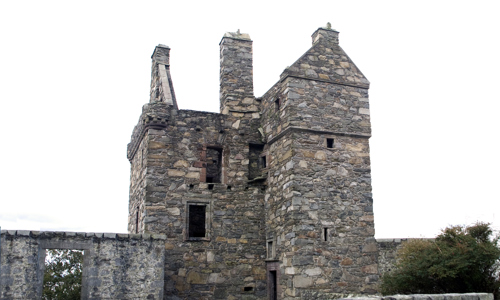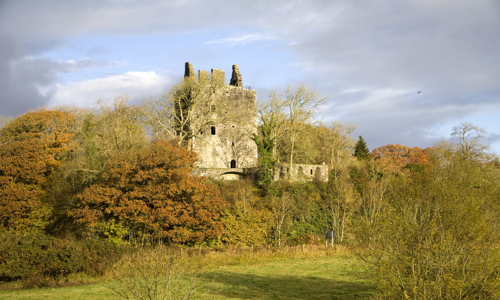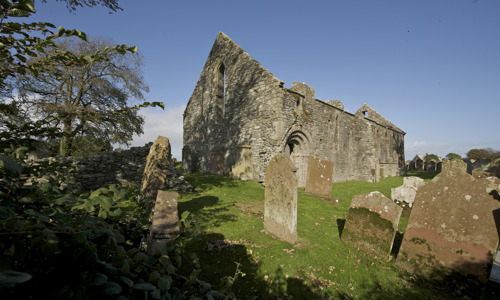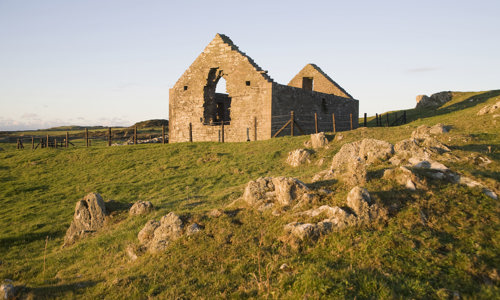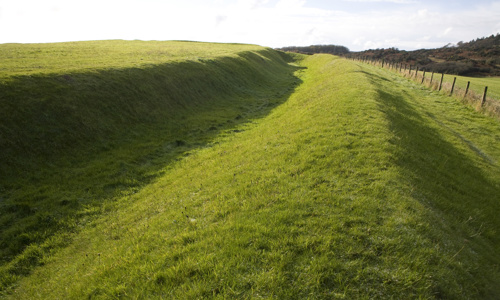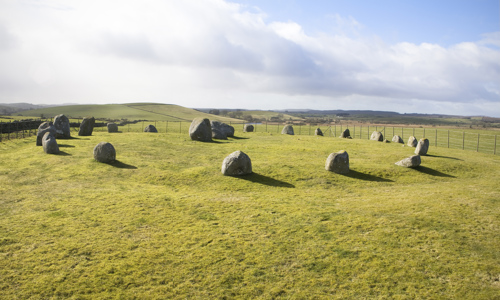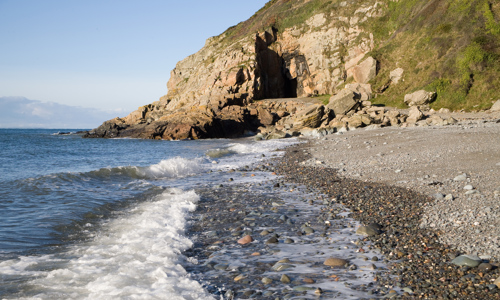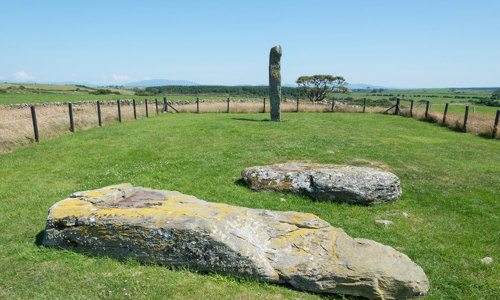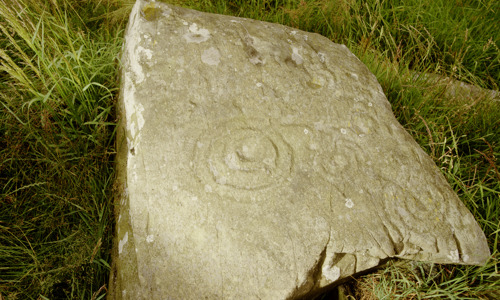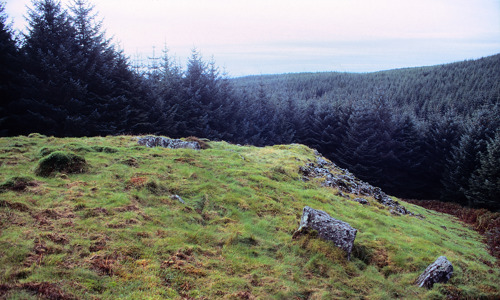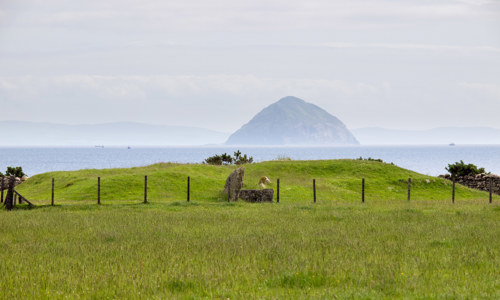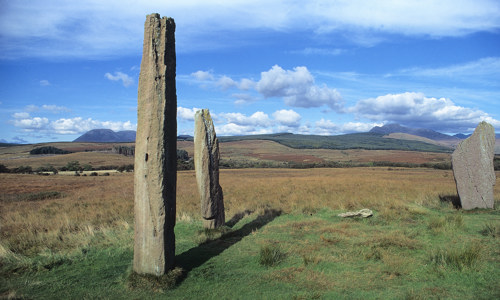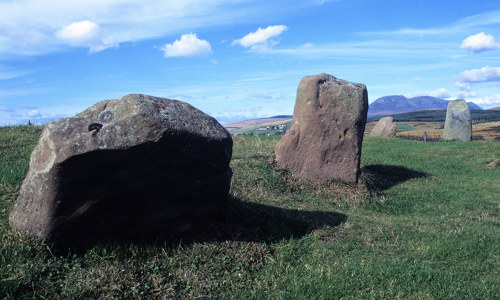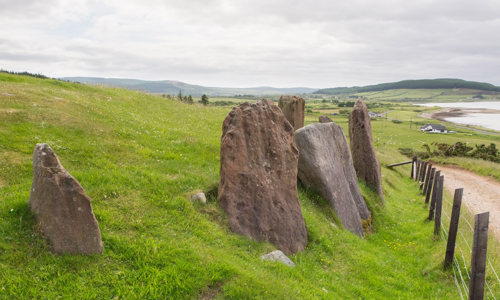History
The tombs’ jagged, skeletal look was never intended by their builders – the many stones which would have covered the cairns were stolen long ago for use as local building materials. Archaeological excavations in 1949 by Professors Stuart Piggott and Terence Powell yielded a great deal of evidence of how the tombs were used and when they were built.
Cairn Holy I
Cairn Holy I is the more elaborate of the two tombs. Its curving façade of standing stones once formed a backdrop to a forecourt in front of the tomb. Excavations show fires were lit here, possibly for ritual ceremonies.
The tomb itself consisted of an outer and an inner compartment. The inner compartment was built as a closed box, and was probably originally roofed by a great stone slab. The outer compartment was entered through the façade.
Within the cairn, two of the stone slabs forming the burial chamber have cup-and-ring marks carved into them.
Cairn Holy II
Legend has it that this is the tomb of Galdus, a mythical Scottish king. While it is possible that the site was reused for later burial, in reality the tomb is much older. It may have been the final resting place of an important individual or group of individuals nearly 5000 years ago. Perched on a rocky knoll against the heather-clad hill of Cairnharrow, Cairn Holy II has an undeniable presence in the landscape.
Far-reaching finds
Little human remains were found during excavations, but there were some surprising artefacts found. They included:
- a flake of pitchstone from the island of Arran in Cairn Holy I’s forecourt
- fragments of pottery from a bowl made in the English style
- Beaker pottery dated to centuries after the tombs’ original construction
- part of a ceremonial axe made of jadeite, found in Cairn Holy I’s outer chamber
The axe is the most interesting discovery. Jadeite must have been imported into Britain from the Alps in mainland Europe, and its presence in Galloway reflects the wealth and power of its owner. It also shows Scotland’s Neolithic population interacted and possibly traded with foreign groups.
The finds of Beaker pottery demonstrate how the tombs continued to be important, special places within the landscape for many centuries.


